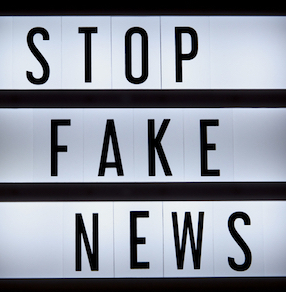Wed, 05/02/2018 - 4:17pm
 "Fake news" is a phrase we've been hearing a lot over the past year. The barrage of half-truths and outright lies seems endless. At times it seems we live in a fog of rumors and fabrications. A conversation with a casual acquaintance can open a window into a world of alternative facts (A national fast-food chain serves burgers made of human flesh! There's an ebola outbreak in your hometown! A Muslim mayor has outlawed Christmas!).
"Fake news" is a phrase we've been hearing a lot over the past year. The barrage of half-truths and outright lies seems endless. At times it seems we live in a fog of rumors and fabrications. A conversation with a casual acquaintance can open a window into a world of alternative facts (A national fast-food chain serves burgers made of human flesh! There's an ebola outbreak in your hometown! A Muslim mayor has outlawed Christmas!).
Fortunately we've got an increasing number of tools to help us debunk and deny the veracity of the fabrications we are cronfronted with daily. One of my favorite go-to sites is Snopes, the granddaddy of all fact-checking websites. There you can find out (for example) whether or not Hillary Clinton destroyed her cell phone during an FBI investigation and if the Australian military really uses kangaroos in combat simulations. Snopes also has a handy guide to fake news sites.
A great tool for verifying the latest news is the Pulitzer Prize-winning Politifact. Another excellent resource is FactCheck.org, maintained by the Annenberg Public Policy Center. FactCheck is clearly organized into subjects, so it's easy to go directly to (for example) verification (or not) of the latest science news or the latest stories circulating on Facebook.
If you're interested in putting some thought and effort into the fight against fake news, take a look at this Washington Post guide to spotting fake news or learn how to flag and report suspicious "news" stories appearing in your Facebook feed. It's also worth reading this Psychology Today blogger's common-sense guide to telling the difference between real and fake news. Taking fake news-spotting to a slightly more technical level, Amnesty International's Citizen Evidence Lab has tips on how to authenticate YouTube videos and ABC News ("A" as in "Australian") has a report on identifying faked photos. And ScienceAlert has information on a free photo forensics tool here.
Happy investigating.....

Add new comment